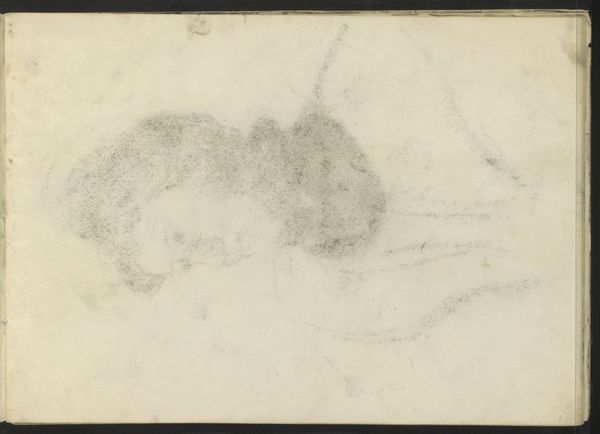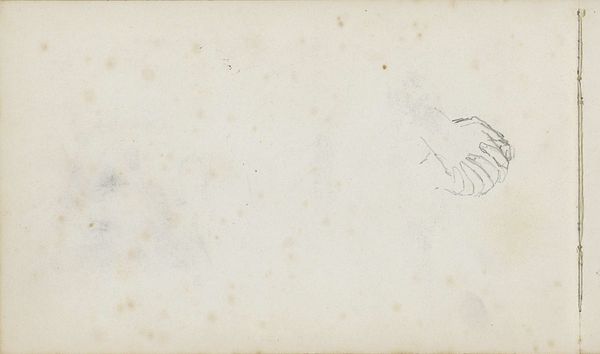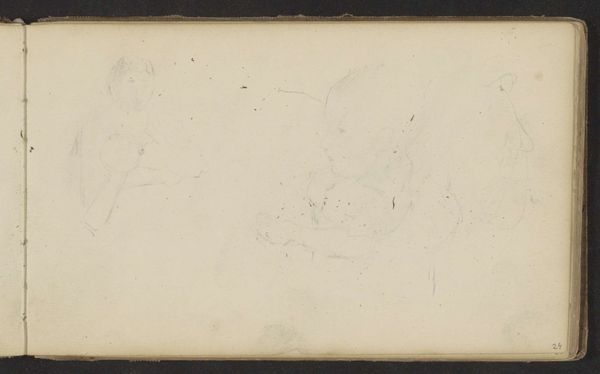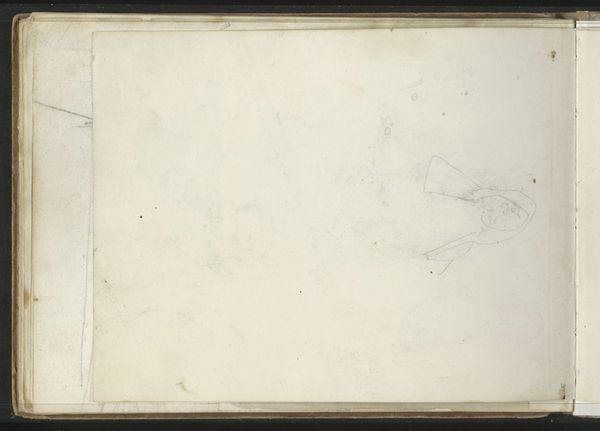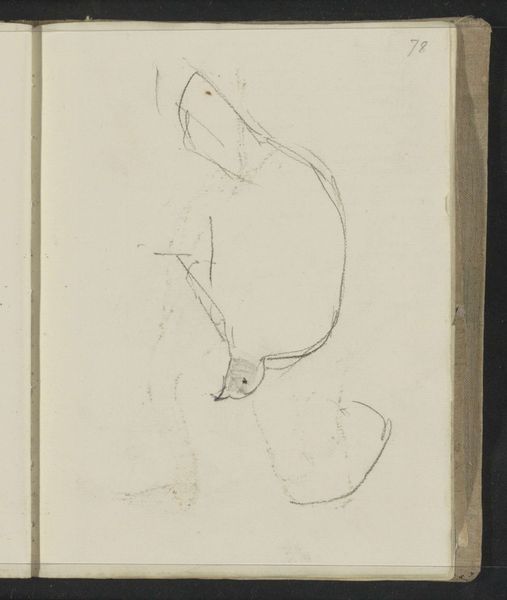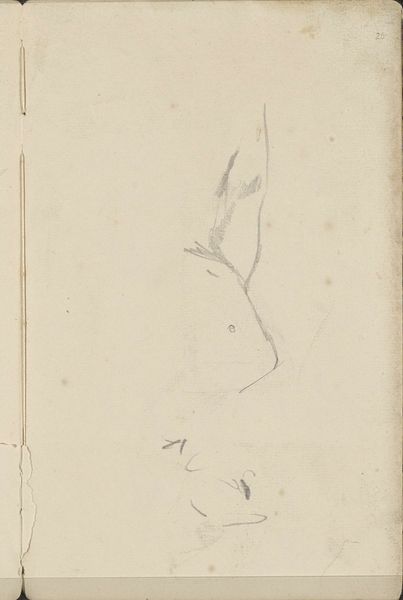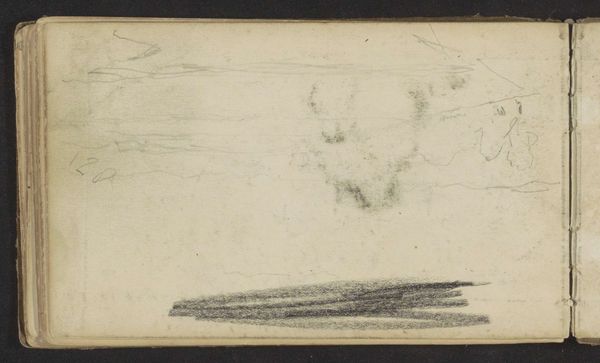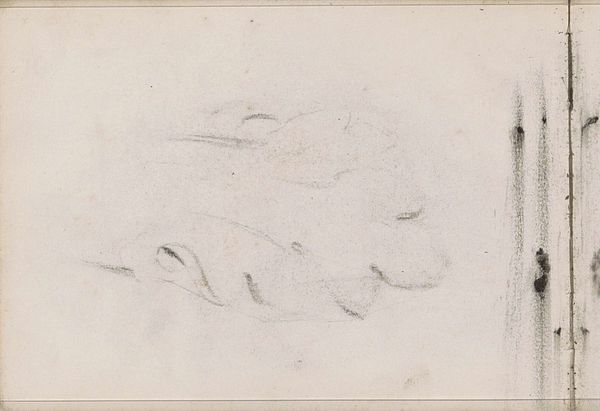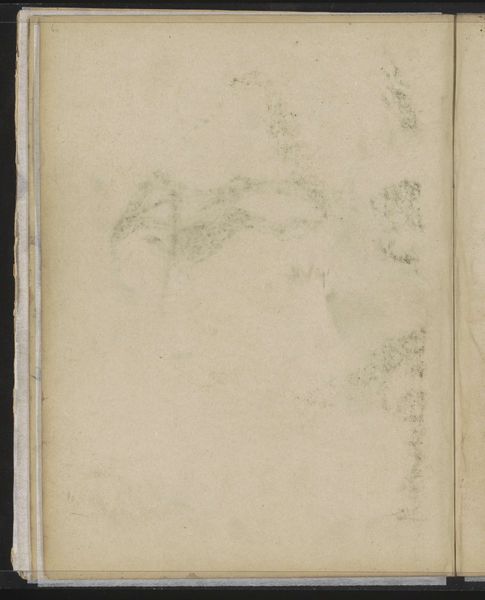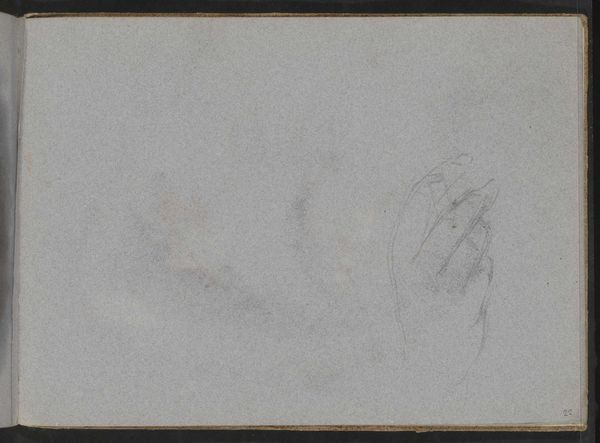
drawing, paper, pencil, graphite
#
portrait
#
drawing
#
paper
#
coloured pencil
#
pencil
#
graphite
#
realism
Copyright: Rijks Museum: Open Domain
Curator: Let's take a moment to appreciate this intriguing drawing, “Abklatsch van de krijttekening op blad 35 verso,” created by Reinier Craeyvanger sometime between 1822 and 1880. It's currently housed here at the Rijksmuseum. What's your immediate impression? Editor: Faint, like a ghost whispering from the past. There’s something ephemeral about it, like a half-remembered dream fading at the edges. Is it meant to be this incomplete? Curator: Well, the title suggests a very specific process— "Abklatsch" refers to a type of transfer print, almost like a copy of a chalk drawing on the reverse side of page 35. So, this isn't necessarily meant to be a finished, polished portrait. Editor: Ah, so it's a deliberate "flaw," a remnant. Suddenly, the fragility speaks louder. What's fascinating is the layering—you can almost sense the pressure applied to transfer the original chalk onto this paper. What was he aiming at? Curator: Craeyvanger was quite skilled in realistic drawings; although he favored landscapes and portraits, this technique could be his way of documenting a portrait sketch that has been drawn on the other side, possibly using a technique similar to carbon-copying. Editor: Makes you wonder about the original chalk drawing, doesn't it? What stories did that version hold? Also, using colored pencil, graphite, pencil and paper here in the drawing... This evokes a tactile feel, where you almost expect chalk dust to drift off the page! It reminds us of our mortality: a pale impression as evidence that once it existed on the original. Curator: And its survival is a testament to preservation of art in this museum, and perhaps to an institutional investment in what we can still learn even from such "traces". It certainly invites speculation, and encourages the viewers to ask "what if?" Editor: Indeed, It makes me feel that everything, even a copy of a sketch, holds beauty. Let’s me appreciate a work that's incomplete. It's all about its past—or is it? It speaks to me of now. Curator: Ultimately, an unfinished image tells a very different and meaningful narrative. A narrative, though ephemeral, we can take forward in our collective story.
Comments
No comments
Be the first to comment and join the conversation on the ultimate creative platform.

